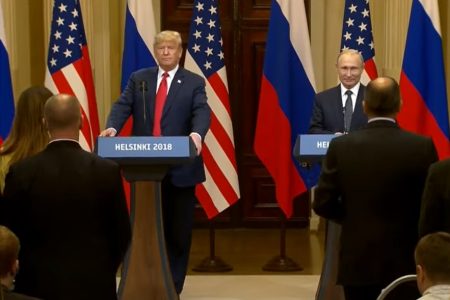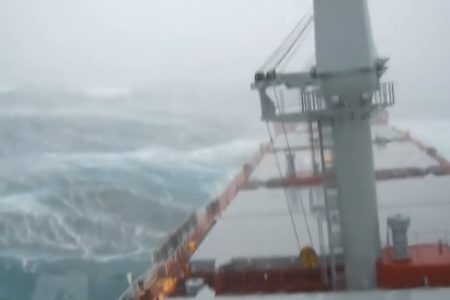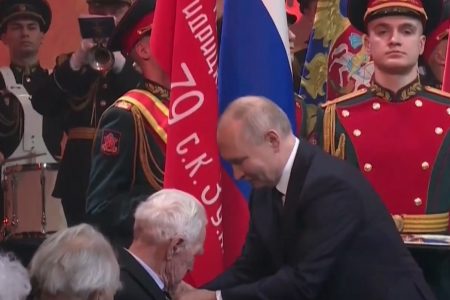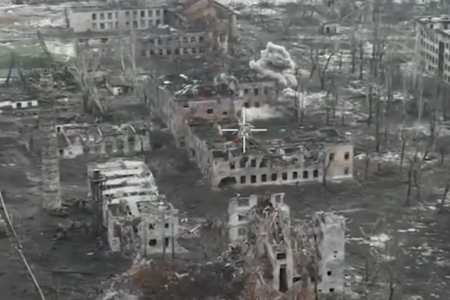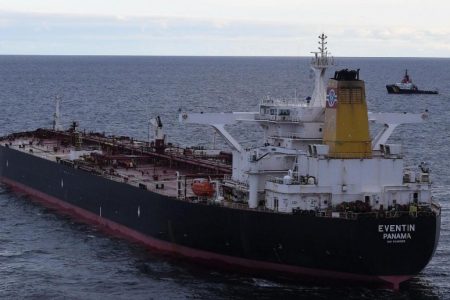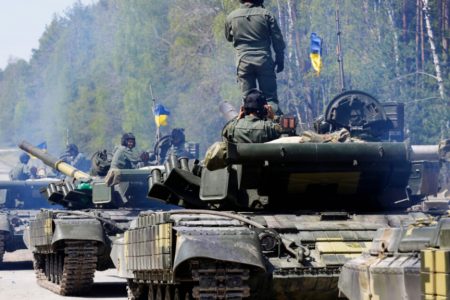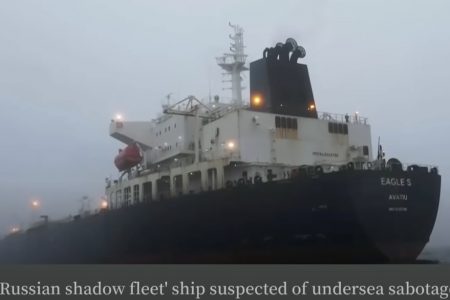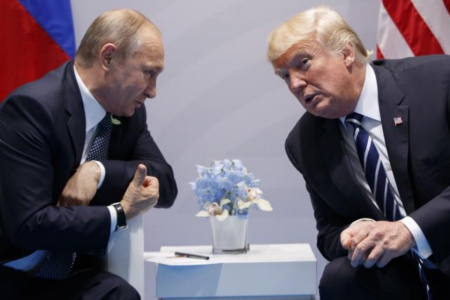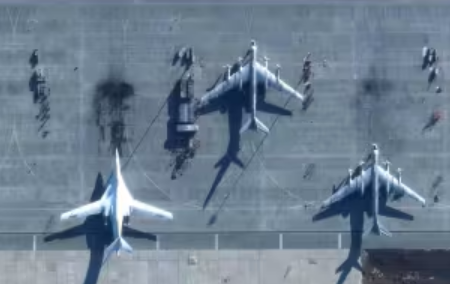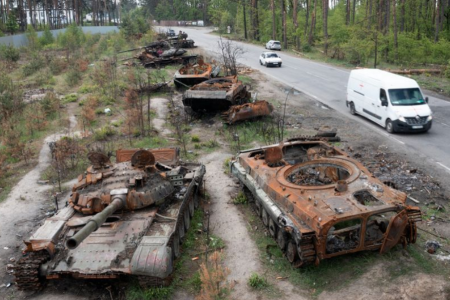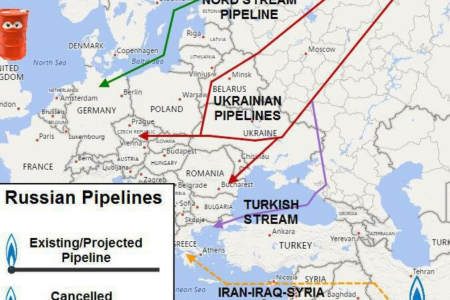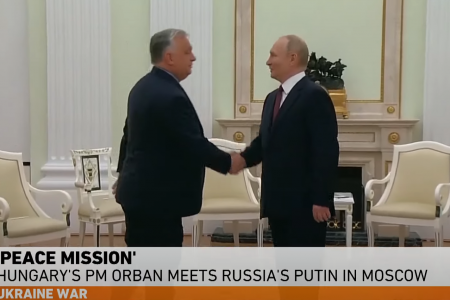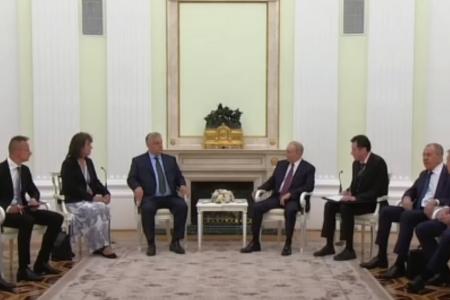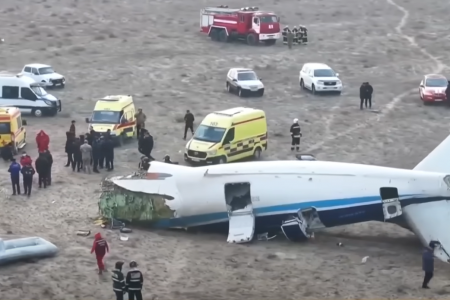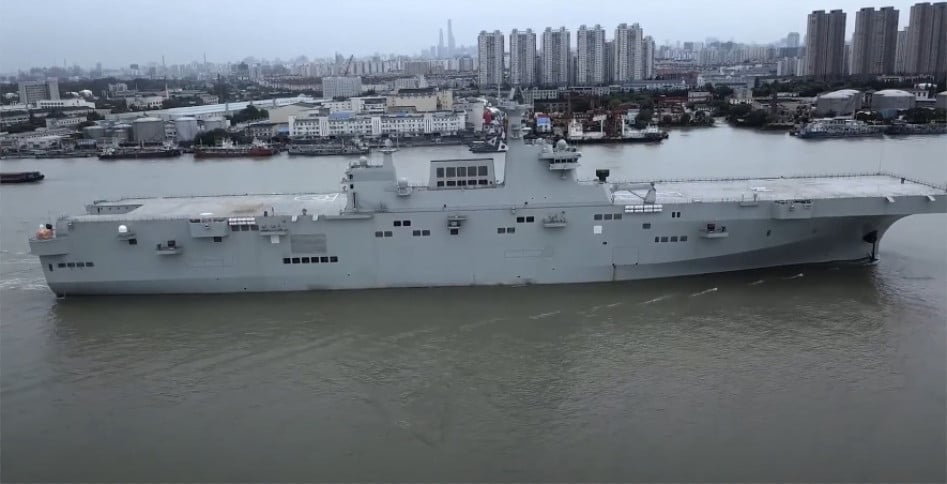
In 2020, the COVID-19 pandemic hits many countries around the world. While other countries are concerned about the fight against the epidemic, China still carries out aggressive and threatening actions in the South China Sea (Vietnamese call it the East Sea). Observers say that Beijing’s goal is to change the regional landscape, based on the so-called 9-dash line drawn by China and claims around 85% of the South China Sea.
China increases its military presence in the South China Sea
On April 18, 2020, China announced the establishment of two new administrative units, one based on Cross Stone in the Trường Sa (Spratlys) and the other based on Phu Lam (Woody) Island in the Hoàng Sa (Paracels). In the following months, China increased pressure by using three forces of the Navy, Coast Guard, and Marine militia in waters off Vietnam, Malaysia, and the Philippines.
In 2020, the Chinese military also continued to increase its presence in the South China Sea with drills and activities such as anti-submarine drills, escort drills, early warning aircraft deployments, and anti-submarine aircraft to Cross Rock, island capture exercises, island security protection …
The US Department of Defense on September 2, 2020, announced the “China Military Strength Report” which said that China had and will increase its military presence in the South China Sea.
Neighboring countries will likely see China deploy its latest aircraft carriers and anti-ship missiles to disputed waters in the South China Sea, the report said. Two of China’s newest bombers, H-6K and H-6J, are believed to have landed on the runway at Phu Lam and Stone Cross. Beijing has also deployed air defense and anti-ship missile systems to Spratlys. The Pentagon also determined that China had launched four anti-ship missiles into the waters off the Paracels in late August 2020.
From Saigon on December 21, longtime South China Sea researcher Dinh Kim Phuc told RFA:
“Assessing the situation of the South China Sea in 2020, we see that the sea has become a hot spot, a place of strategic competition between superpowers and great powers … The US will increase the introduction of warships into the South China Sea, then conduct exercises with allied countries. China also intensified drills, bringing Coast Guard ships, navigators, survey ships deep into the oil and gas exploitation area of Vietnam … and turned the sea into the crater of total war in the area.”
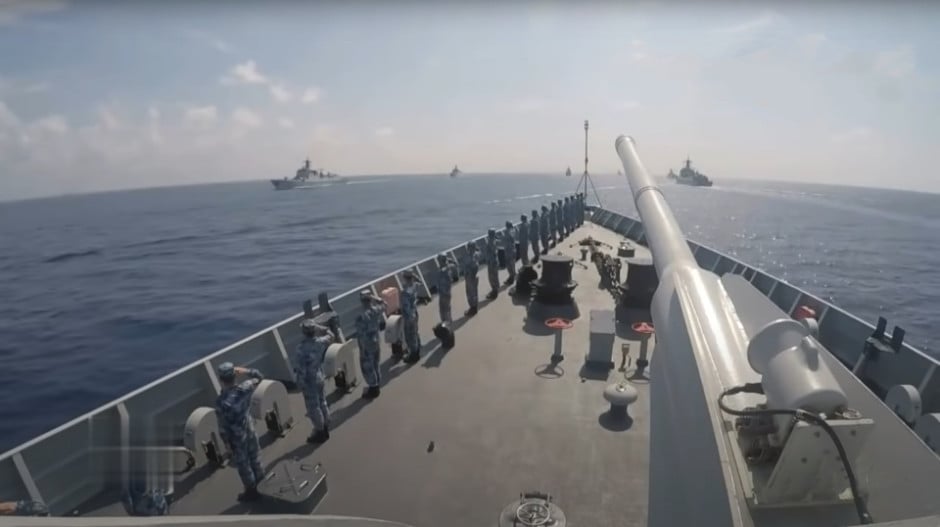
Before that, in early 2020, China sent the Coast Guard ship 35111 to provoke in the north of Indonesia’s Natuna archipelago but faced tough Indonesian measures. Then on January 9, the Coast Guard ship 35111 returned to Vietnam’s Vanguard Bank to deter and put new pressure on the Vietnamese government. In 2019, Chinese ships also sought to block Vietnamese ships in this area.
China pressured Vietnam to cancel foreign drilling rigs
Not only that, in 2020, China acted more aggressively with the threat of large offshore oil and gas projects in the Exclusive Economic Zones (EEZs) of Malaysia and Vietnam.
According to Russian news site oilcaptial.ru, Russian oil and gas company Rosneft was forced to cancel the contract with British corporation Noble Corporation in the planned exploitation offshore Vietnam, because of heavy pressure from China.
Professor Carlyle A. Thayer, a Vietnamese research expert at the Australian National Defense Academy, when replying to RFA via e-mail on December 21, said the incident began in 2012 after Hanoi enacted the Law of the Sea. China National Offshore Petroleum Company (CNOOC) has responded by allowing oil and gas exploration for plots in Vietnam’s Exclusive Economic Zone (EEZ), including the waters near the Vanguard Bank and urges foreign companies to bid for oil and gas exploration contracts but no foreign oil and gas companies accepted this offer.
When secretly submitting the draft ASEAN-China Code of Conduct in the 2018 South China Sea Negotiations, Professor Carlyle A. Thayer said Beijing stated: Oil and Gas exploration and development in disputed waters will be accomplished through coordination and cooperation among coastal states in the South China Sea and will not be conducted with the cooperation of companies from states outside of the area.
Therefore, in 2017, China pressured Spain’s Repsol to stop operations in waters near Vanguard Bank and threatened Vietnam with force if it did not stop exploring oil and gas. In July 2017, the Vietnamese government suspended Repsol’s activities. In March 2018, the Vietnamese government, under increasing Chinese pressure, halted Repsol’s activities completely. Repsol then received the compensation.
In July 2019, China dispatched the Hai Duong 8 ship to conduct a survey of some CNOOC oil lots inside Vietnam’s exclusive economic zone while harassing Japan’s-owned oil rig Hakuryu-5 and service ships conducting exploration activities at Lot 06-1 under the contract with Russia Rosneft.
On April 9, 2020, the Noble Group reported that the Noble Clyde Boudreaux was under contract to operate in Vietnamese waters from the beginning of June to the end of July. At the end of May, according to the state-controlled media, Vietnam has considered deploying the Noble Clyde Boudreaux to Lot 06-1, where the Russian company Rosneft has been operating for a number of years. However, a month later, Noble Group reported that the “previously disclosed contract in Vietnam” of Noble Clyde Boudreaux has been canceled.
Professor Carlyle A. Thayer explained further:
“Vietnam has not released details of why it canceled its contract with Noble Group for Noble Clyde Boudreaux services. It can only be speculated that the Vietnamese leaders have calculated that the risk of implementing Noble Clyde Boudreaux is too high to cancel the contract and pay the termination. A South China Sea researcher estimated that canceling both contracts cost Vietnam $1 billion in damages.
There is evidence of China’s attempts to intimidate Vietnam this year to prevent the Vietnamese government from resuming operations near Vanguard Bank and Building 06-1. On July 4, China Coast Guard (CCG) vessel 5402 entered the Lan Do gas field at Block 06-1 to monitor the operation of the Lan Tay drilling rig. Rosneft is the current operator of the Lan Do gas field area. On July 5, CCG 5402 was stationed in the waters near Vanguard Bank. Four days later, it was announced that Noble Clyde Boudreaux’s contract with Vietnam was canceled.”
The Lan Tay drilling rig, operated by Rosneft Vietnam, is located in the East Sea off Vung Tau, Vietnam.
According to Professor Carlyle A. Thayer, Vietnam’s failure to Repsol in 2017-2018 set a terrible precedent. Vietnam had to compensate twice, once to Repsol and then to Noble Group, for terminating the gas exploration contract. According to the report, PetroVietnam does not have the financial capacity to develop exploration and exploitation by itself in the waters around Vanguard Bank. Potential new investors would discourage Vietnamese actions to cancel contracts, as it would increase risks for long-term investments.
Master Hoang Viet, a South China Sea researcher, when responding to RFA on December 21, also said that the Vietnamese side had never given official information about the rig withdrawal of Noble Group in 2020, he said. next:
“Personally, I think the 2020 withdrawal raises a question of why it is impossible to drill new detectors in block 06.1 and still decide to hire Noble’s rig to lose such a large amount. In my opinion, it shows 2 angles, the first reflects the Vietnamese side still intends to explore and exploit this area. But the second angle is that there is more opposition (on the Vietnamese side). This creates a not so good precedent, arguably a bad precedent for Vietnam. But if Vietnam is temporarily unable to exploit and not let China exploit in this area, then it is okay because Vietnam can exploit another time. But if China does exploit now, that’s another matter.”
According to Master Hoang Viet, of course, Vietnam also has its own reason when implementing this tactic. But whether this strategy is really good or not, we have to wait a while longer.
Professor Carlyle A. Thayer said that the Chinese factor – whether explicitly or implicitly – is always present in Vietnam’s decision-making on oil and gas exploration in the South China Sea. China will inevitably respond to any resumption of oil and gas exploration activities in the “contested waters” it claims by sending ships of the Chinese Coast Guard and fishing vessels of the Marine Militia to harass operations.
In short, the cancellation of the contract with Noble Clyde Boudreaux is another nail in Vietnam’s effort to develop gas resources in the area around Vanguard Bank and Block 06-01. By stepping back under Chinese pressure, Vietnam has lost the chance to find and develop gas reserves if find, Professor Carlyle A. Thayer said.
The Chinese ship sank the Quang Ngai fisherman’s fishing boat
On April 2, 2020, the fishing vessel number QNg-90767-TS owned by Mr. Tran Hong Tho was hit by Chinese Coast Guard vessel number 4301 in the Phu Lam island area, Paracels. One day later, the Vietnamese government released a video showing a large Chinese ship chasing and crashing into a Vietnamese wooden fishing boat near the Paracels.
Vietnam’s Ministry of Foreign Affairs said that it later handed over a protest note, asking the Chinese side to investigate, clarify and strictly deal with the sinking of a Vietnamese fishing vessel in the Paracels by public officials and the Coast Guard.
However, China said that the Vietnamese fishing vessel “refused” to leave the area when the Chinese patrol boat ordered and returned to crash into the Chinese ship. (!?)
Mr. Nguyen Viet Thang, chairman of the Vietnam Fisheries Association, when replying to RFA in April 2020, said about what he believes is “reversal” on the Chinese side:
“That is very absurd. How dare a wooden ship crash into an iron ship? Photos are also very clear. We have pictures of the bow and hull of the ship being broken. A spokesperson for the Chinese Foreign Ministry said inaccurately, it was a reversal. The fishermen also reported very clearly with specific photos. This clearly demonstrates the essence of China. This is the first time a spokesperson of the Chinese Ministry of Foreign Affairs has blamed a Vietnamese fishing vessel for crashing into their country’s ships.”
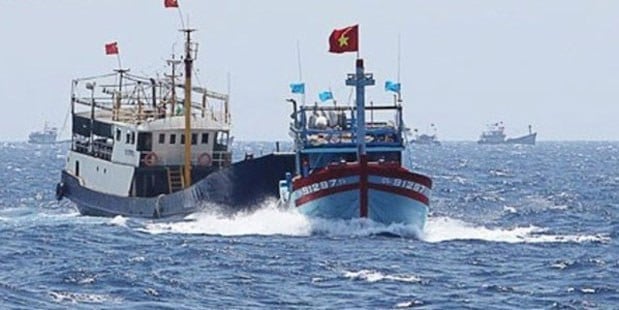
Every time China gets aggressive with the fishermen, as usual, Vietnam’s Ministry of Foreign Affairs replays its verbal protests opposing China’s actions and claim that the sea is under Vietnamese sovereignty …
Vietnam has overlapping waters with many other countries. For example, the mouth of the Gulf of Tonkin so far has not had a clear boundary. Therefore, when Vietnamese ships collided with Chinese ships, it could easily lead to arrest and bullying by the Chinese side. Similarly, in the Paracels waters, Vietnam says this is Vietnam’s waters while China also says its own waters, so they still arrest rob, and fine fishermen …
Responding to RFA on December 21 from Danang, Mr. Tran Van Linh, member of the Standing Committee of the Vietnam Fisheries Association cum chairman of Danang Fisheries Association said about the activities to protect fishermen in the East Sea during 2020:
“If in the past, every time China crashed a Vietnamese fishing vessel, the government, as well as the Fisheries Association, would speak out in general, even without naming the country where the ship crashed. Then in 2020 we have strongly condemned, called China directly, clearly stated the ship, and demanded compensation … Of course, China is a strong country and has very aggressive behavior in the East Sea, so they responded with ridiculous and ridiculous words, for example, they say Vietnamese ships had trespassed before hitting their ship … ”
However, Mr. Tran Van Linh said that the condemnation of the Vietnamese authorities in 2020 was strong enough. As a result, recently the rate of arresting and looting Vietnamese ships of Chinese ships for Vietnamese ships has also decreased. Mr. Linh added specific actions of the Vietnamese side:
“In the past, Vietnam’s law enforcement forces came almost exclusively. That is, after the fishermen came to report the attack, the law enforcement force came to the fishermen’s house to make a record … But today, our fishermen are partly safe due to the presence of the Coast Guard, Fisheries surveillance, Vietnamese navy … on fishing grounds and they appeared in time to prevent the Chinese intentions to attack and rob Vietnamese ships.”
In fact, is Vietnam’s law enforcement really able to be present in time to rescue Vietnamese fishermen from the attack of Chinese ships? A fisherman in Quang Ngai, when responding to RFA in June 2020, said that when he was attacked by a Chinese ship, he often called for rescue in Vietnam, but if he went offshore, the Vietnamese law enforcement could not provide timely support.
Looking back to 2020, towards the year 2021, South China Sea researcher Dinh Kim Phuc made a comment related to the sea situation:
The situation in the South China Sea will not change, there will be no war and conflict, nor will it be calming. All will continue to become a place of strategic competition of the world’s superpowers. We wish that, with the leadership of the new US President Joe Biden, his efforts with allies and forces around the world to bring China back into the framework of international law. Rather than the hope that dispels China’s expansion ambitions, makes China give up its illegal U-shaped line, weakens China, it is just an illusion. I hope that, with the power of the whole world, of the righteous forces bringing China back to the world order, it is also successful.”
Particularly the response of Vietnam, researcher Dinh Kim Phuc said that Vietnam’s steps call for internationalization, multilateralization, and fight by international law, with the opinion of the above global powers is a step suitable to Vietnam’s level, suitable to the economy and the position of Vietnam today.
Thoibao.de (Translated)



